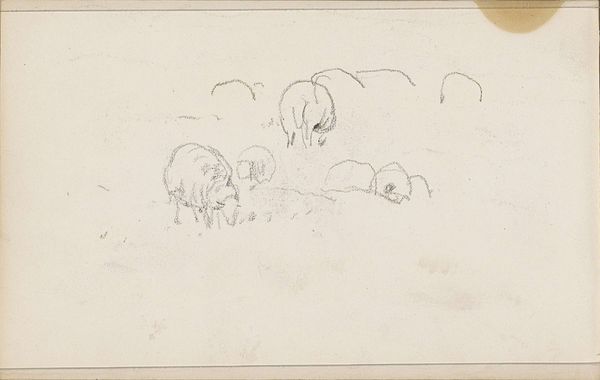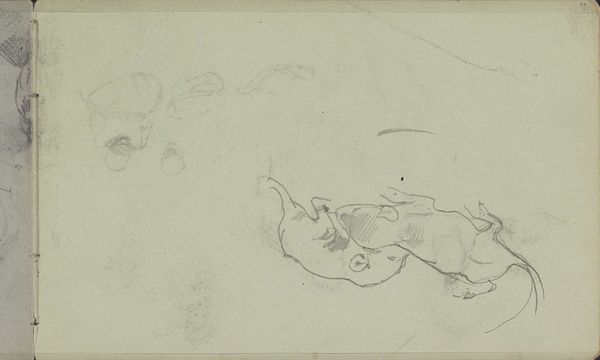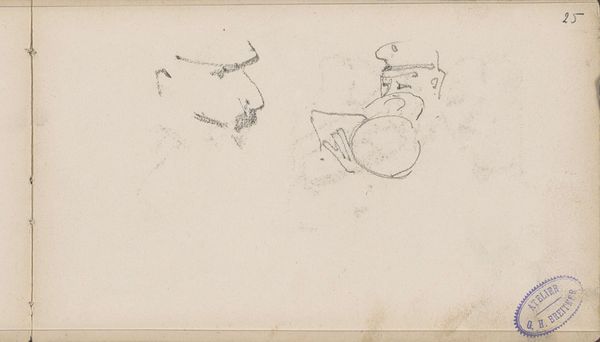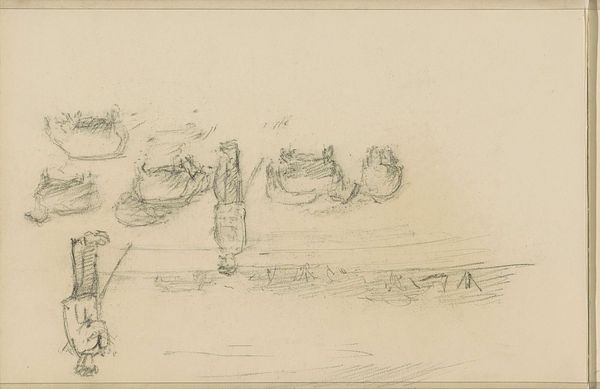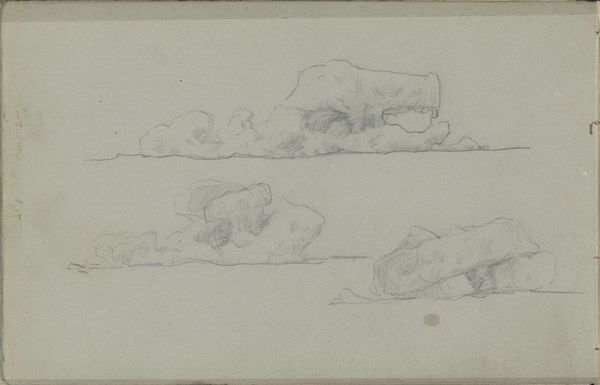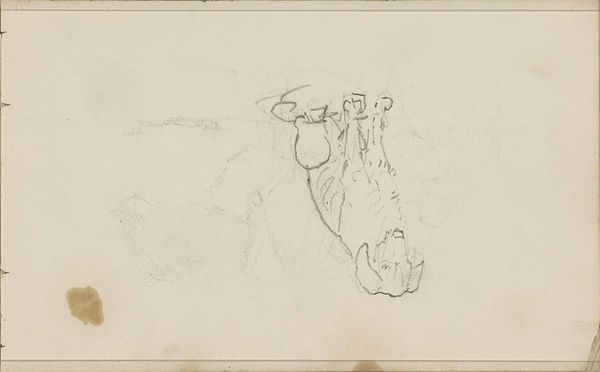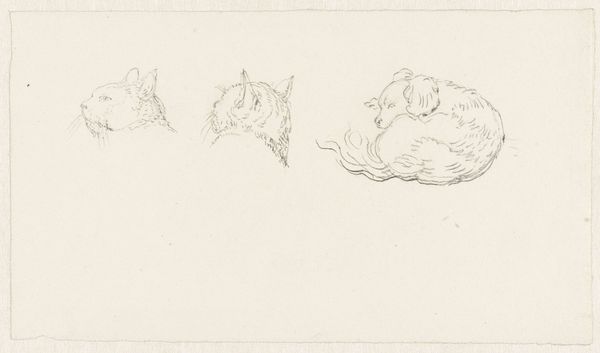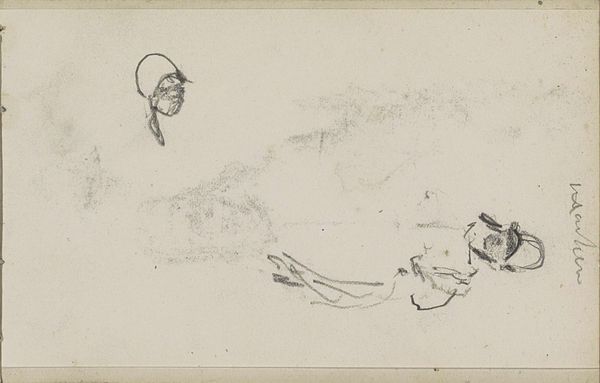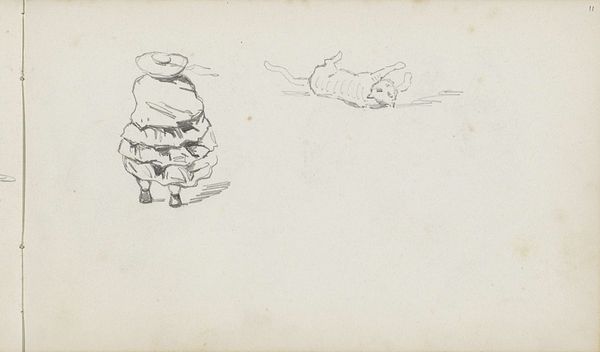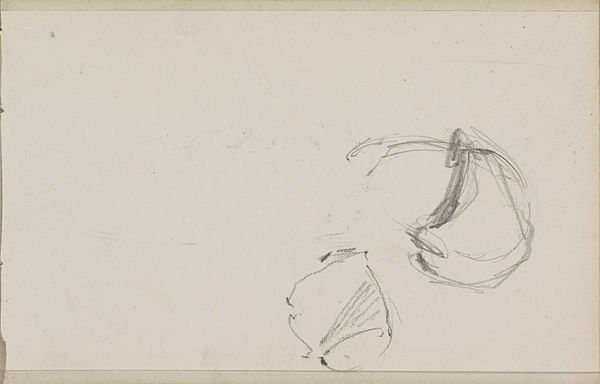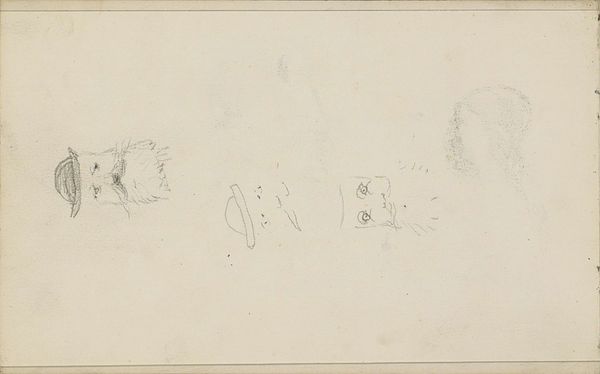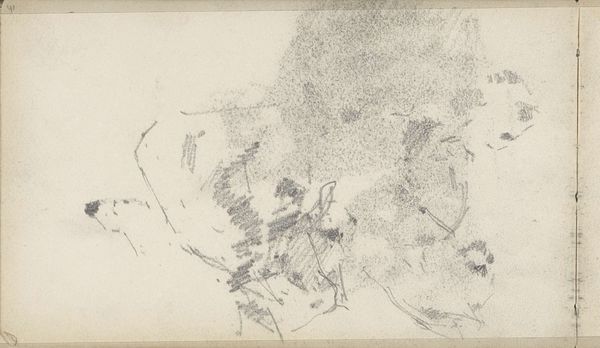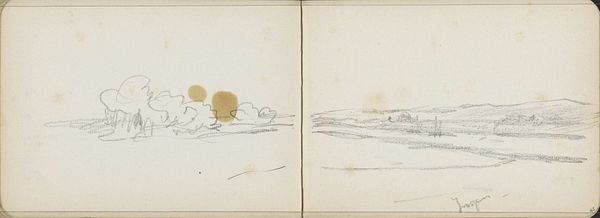
drawing, pencil
#
drawing
#
landscape
#
pencil
#
realism
Copyright: Rijks Museum: Open Domain
Curator: Anton Mauve created this sketch, “Grazende schapen,” or "Grazing Sheep," sometime between 1848 and 1888. The medium is simply pencil on paper. Editor: There's an immediate simplicity to it. Almost stark, yet somehow comforting in its minimalism. You see these vague, softly shaded masses that evoke the shapes of animals. Curator: Right, and consider Mauve's wider role within the Hague School; his connection to Van Gogh is vital to understanding how influential his landscape depictions were at the time. The drawing portrays not just sheep, but a sense of Dutch pastoral life. Editor: It's interesting how he builds form simply with a very controlled range of graphite marks, densely packed, loose lines; look at the different pressure and rhythm creating subtle volume in these bodies! And it begs the question, was the support cheap and readily available, emphasizing this kind of direct sketching for study purposes, or presentation? Curator: His relationship with the art dealer, Hendrik Mesdag, might give some context as to the material choices. Their agreement created something of an art monopoly. While artists benefitted, it affected availability and, of course, access for those who didn't play by their rules. Editor: Fascinating to consider the socio-economic constraints implicit in the work itself. You know, seeing the laboriousness involved, it seems almost a challenge to painting with how many lines he needs to evoke three dimensions, form and movement. Curator: His ability to reduce the pastoral scene to these essentials reflects the shifting Dutch identity during that period, finding solace in agriculture even amid growing industrialization. It speaks to the broader national consciousness of holding onto tradition while stepping into a new era. Editor: Ultimately, a piece so simply produced invites endless interpretation, from the humble materials utilized in creating this subtle work, to what those soft forms suggest regarding humans relationship with landscape and craft production. Curator: Exactly. I believe this drawing acts as a window into understanding art as a dialogue between an artist, socio-economic forces, and a nation's yearning to see its story represented on paper.
Comments
No comments
Be the first to comment and join the conversation on the ultimate creative platform.
